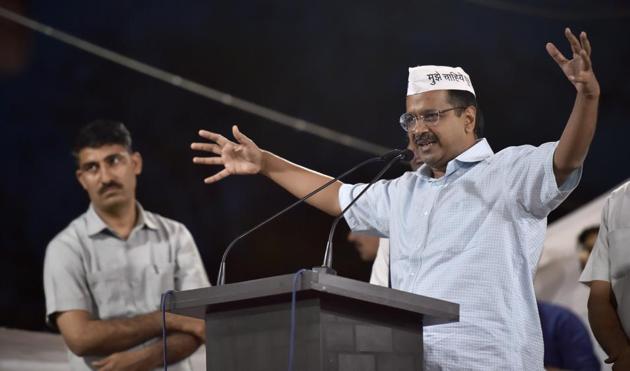Delhi elections: Gifting the advantage to the adversary
An AAP-Congress pact would have meant the consolidation of the anti-BJP votes in the alliance’s favour, making it difficult for the BJP in all the seven Lok Sabha seats of Delhi
As Delhi goes to the polls on Sunday, a small but significant battle is playing out. We don’t know what exactly May 23 will eventually throw up, but in the capital city, a careful alliance between the Aam Adami Party (AAP) and the Congress had the potential to deal a big blow to the Bharatiya Janata Party (BJP) in all the seven Lok Sabha seats.

A triangular contest in Delhi between the BJP, the Congress and the AAP, however, might result in the repeat of 2014 Lok Sabha results. If the BJP manages to retain its 2014 vote share (46.4%), which seems likely, the party would easily win all seven seats in Delhi. There are no visible signs of unhappiness with the BJP, and even if the party’s vote share declines by a few percentage points, it is still likely to corner almost all the seats. The only way to defeat the party in the capital is to consolidate anti-BJP votes, which was an easy possibility had the AAP and the Congress allied.
The Congress faced humiliating defeats in Delhi in three electoral contests in quick successions: the 2013 and 2015 assembly elections at the hands of the rookie AAP; and, in the intervening period, the 2014 Lok Sabha elections at the hands of a resurgent BJP. Successive Lok Sabha elections since 1984 indicate that the Congress in Delhi had a strong support base among the Dalits, the poor, the Muslims, the Other Backward Castes and, in recent years, the Poorvanchalis. Before its vote share plummeted to a dismal 15.1% in 2014, the Congress had polled 68.7% votes in the 1984 Lok Sabha elections, 43.4% in 1989, 39.5% in 1991, 37.2% in 1996, 42.6% in 1998, 41.9% in 1999, 54.8% in 2004 and 57.1% in 2009. But the erosion of the party’s vote share had little to do with the BJP, and had more to do with the AAP making deep inroads into its party’s support base. Riding on the anti-Congress mood largely on the issue of corruption during the United Progressive Alliance-2 regime, the AAP cornered the Congress’s traditional voters: the poor, the lower and the middle class, Dalits, Muslims and the OBC.
In this scenario, an AAP-Congress pact would have meant the consolidation of the anti-BJP votes in the alliance’s favour, making it difficult for the BJP in all the seven Lok Sabha seats of Delhi. Sample this: In 2014, the BJP’s vote share was below 50% in all the seven seats. In Chandni Chowk, it was 44.6%; North East Delhi, 45.2%; East Delhi, 47.8%; New Delhi, 46.7% votes; North West Delhi, 46.4%; West Delhi, 48.3%; and, South Delhi, 45.1%. A combined vote share of the AAP and the Congress should have put them into a position to pose a strong challenge to the BJP in all the seats, except for West Delhi, where the BJP would have won despite the AAP and the Congress coming together.
But, in the absence of an alliance, all the seven seats are witnessing a three-cornered contest, giving the BJP a clear edge. There may be some last-minute effort to help consolidate the anti-BJP votes in the favour of either the AAP or the candidate best suited to defeat the BJP, but the two parties have missed the bus.
Between 2013 and 2015, when the AAP emerged as a strong political force in Delhi, it may have got some support from BJP voters. But, by and large, the BJP voters have remained loyal to their party. For example: The upper caste, upper class Punjabi Khatri and the trader community have remained with the party for a long time, a legacy established by BJP leader Madan Lal Khurana. The BJP’s vote share, 33%, even during the 2015 Assembly elections when the AAP won 67 of the 70 Assembly seats, is a testimony to this fact. The dismal performance of the Congress, which polled only 9.6% votes — a massive decline of nearly 48% between 2009 and 2014 — indicates the large scale erosion in the party’s support base.
Sanjay Kumar is a professor and the director of Centre for the Study of Developing Societies (CSDS). He is the author of Changing Electoral Politics of Delhi: From Caste to Class
The views expressed are personal






